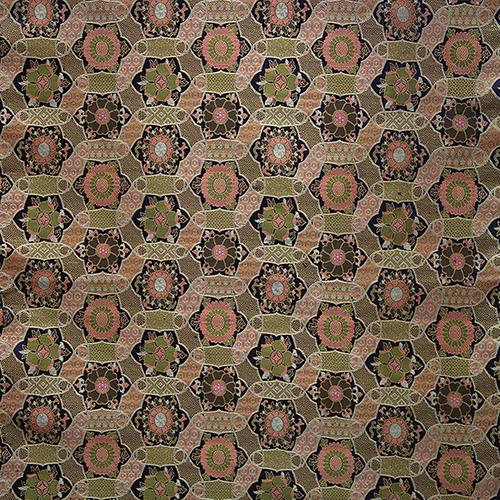All about Applique Thangkas
Applique Thangkas is Known as göchen thangka in Tibet. The Huns of Central Asia were the first to use applique to decorate saddle blankets. It traveled eastward along the Silk Road, and Tibetans accepted it as a holy art form.
Fabric thangkas were created in the 15th century utilizing an indigenous applique method. These thangkas, which are lavishly embroidered and appliqued, immediately became popular in Tibet.
Because of its excellent quality materials, durability, suppleness, and potential to last many generations, appliqued thangkas are typically believed to be superior to painted thangkas. Using specific stitching techniques, each item is expertly hand-sewn.
In Tibet, senior monks have traditionally passed down the highly esteemed ability of thangka making to the younger generation. Unfortunately, in Tibet, this custom has largely been lost. Though it has revived in India and Nepal. The preservation of this sacred art form is important since it carries enormous cultural and religious value for Tibetans and Buddhists around the world.
Table of Contents
What is applique Thangka?

Applique Thangka is the traditional way of hand sewing small fabrics together to give shape and design the same as the painted thangka.
Different colorful silk pieces are sewn together with Mongolian horsetail following strictly adhering to the proportions of deities as they are laid down in Buddhist scripture
It is an incredible amount of work – much more work than painting a thangka.
Origin and History of Applique Thangka

The applique Thangka was initiated by the great king Sontsen Gampo in 7th century from Tibet, Applique Thangka is an art form where colored cloth generally silk, which is imported from china or brought from Varanasi (India) is cut in the required shape.
Pieces are sewn to each other or to a background silk fabric. One of the main reasons for introducing the applique technique was to make it more durable than Thangka painting. Applique Thangka lasts longer compare to Thangka painting as the effect of moisture, dust, and heat does not affect much to applique thangka while traveling.
Materials used in Applique Thangka
Applique Thangkas are made by using specific stitching techniques, each item is expertly hand-sewn. The majority of the materials used in applique come from nature.
Varanasi (India) silk cloth and thread were brought in, and Mongolian horse tail hair was purchased. The following is a list of other tools and raw materials used:
Silk Fabric
Silk fabric is used mainly as the base of the painting and also to make the different cut pieces of the design.
Silk fabric in Nepal is usually imported from India.
Silk Thread

Different color silk threads are used used to wrap around the horse tail hair and also to stitch the parts on the cloth.
Horse Tail Hair

Horsetail threads are placed on the outline made on fabric and stitched.
Needle
The needle is used to stitch the cut pieces on the base fabric.
Adhesive
To stick the fabric on the base cloth.
Heating Tool
Electric iron box helps to fasten the cut piece on the base fabric.
Tracing Paper
Tracing paper is used to trace the design on the fabric. In the picture, we can see the final piece of the applique thangka with the traced paper.
Tracing paper is helping to maintain the iconography of the deity according to the model thangka.
Chalk Powder
Once the thangka is traced on the fabric by using tracing paper, the chalk powder is used to form the design on the fabric.
Scissor
Scissor is used to cut the silk, fabric according to t the desired shape and design.
Applique Thangka Masters Dorjee Wangdu

Master Dorjee Wangdue was born in Lhasa, Tibet in 1962. At the age of 16, he joined Namgyal Tantric Monastery of His Holiness the Dalai Lama and studied basic Buddhist philosophy and tantric rituals. It was his precious teacher and guide, Venerable Thubten Jamyang, a Kalachakra ceremony and ritual master assisting His Holiness the 14th Dalai Lama, who encouraged him to learn and improve his inborn talent in making religious images of appliqué.
His first appliqué thangka was a three-long life deity as the main object of the altar at the palace of His Holiness the Dalai Lama in Ladakh made in May 1987. When His Holiness the Dalai Lama saw and blessed it, he found the quality of work up to the standard and advised to continue to improve and preserve this inborn talent in Tibetan Art.
From that day on he worked very hard and further improved his skills in making appliqué thangka. Following this, he established an appliqué thangka study center in Dharamsala, North India, where many younger Tibetans are trained so that this unique art-making applique thangka is preserved. He believes teaching this art form to the younger generation of Tibetans is also important since most of the trained artists in Tibet have passed away and the Chinese also continue to restrict anything that is related to Tibetan Buddhist practice. So far he has trained over 150 students who are able to make appliqué thangka. His contribution to reviving and preservation of the art is revered and recognized in the Tibetan community.




























